When modern boxing fans view 100 year old film of old-time boxers they come away with the conclusion that these guys could not box well because so much clinching occurred and that their epic length fights were not that strenuous because they spent so much time "resting" in the clinch.
The fact is that clinching was often permitted because hitting in the clinch was on the menu of choices that the fighters had at the beginning of the fight. When the referee brought the fighters together before the bout in old-times it meant something. It was not just a ritual but often a negotiation. Up until 1900 [eight years into the Marquis of Queensberry gloved boxing era] hitting in the clinches—what today is called dirty boxing in MMA—was still often an agreed upon tactic.
Clinching was falling out of favor with observers though. Spectators wanted something more visually appealing, and a wider audience requires tactics that are more easily understood. By 1910 fighters could expect to be disqualified for hitting in the clinches, although it still happened a lot.
What did all of this clinching mean?
Fighting in the clinch is more anaerobic than boxing at jabbing range and is therefore more exhausting. Grappling in general is more strenuous than striking. Modern boxers generally do "rest" in the clinch because they are not permitted to do anything in the clinch and are expected to lay there until separated. Clinching is still the best defense against getting knocked out. Although it is generally not taught in the gym, it is learned there when a fighter finds himself in danger sparring.
The most notorious modern clinch fighter was Ali, who clinched a record number of times with Frazier in Manila. Ali used an overhook and a come-along. Old-time fighters were just one generation removed from bare-knuckle fighting, where hip throws and holding and hitting were acceptable tactics. They generally used an overhook sunk in above the elbow while they threw uppercuts, hooks and crosses with their free hand. This looks sloppy but is effective if it is trained for and executed properly.
You need really good hips to pull this off.
The fact is old-time clinch-boxers would have to be retrained to fight according to modern rules and would probably end up being disqualified today. This did happen. One only has to look at the many DQ losses on old-time records. Likewise, if you took a modern boxer back in time he would get mauled in the clinch and probably KO'd there too. Most modern fighters do not know how to clinch, and are generally incapable of breaking a clinch. This is why modern boxers are not able to compete in MMA until they are extensively retrained. The one prominent modern boxer who I believe would do well under old-time or bare-knuckle conditions is Bernard Hopkins. He actually trains and teaches the clinch, and employs such old-time tactics as punching the hip and thigh.
Old-time boxers often fought and trained with wrestlers. In fact, James Corbett wrestled for a half hour a day just to practice staying out of the clinch and escaping. Corbett hated fighting in the clinch but had to adapt and train. Sam Mcvey actually went to Japan and defeated a Jujitsu champion in an MMA bout. Granted the Jujitsu fighter was probably giving away 60 pounds. But none of our current heavyweight boxers would last more than a round with a good Brazilian jiu-jitsu welterweight in open competition today.
Always keep in mind that boxing as a sport has evolved away from boxing as an art and science for the purpose of being more entertaining. All of the old-time clinching might look sloppy but it was effective. Now, there are clinching countermeasures that do work, and permit a properly trained boxer to avoid and break clinches. Jack Blackburn was instrumental in teaching this style of boxing, with the result that the Black boxers under his direct and indirect influence such as Joe Louis and Ray Robinson became the best all around boxers that have ever practiced the art. It was not until aggressive officiating encouraged boxers to look to a third party to take care of the clinch in our own time that these skills finally eroded to the point that only 1 in 40 pro boxers were able to avoid the clinch of a less skilled opponent in a study of 106 cable TV bouts conducted in 1998.
Most boxing coaches spend the vast majority of their time preparing fighters for amateur competition, which has zero tolerance for clinching, often resulting in the referee being the busiest guy in the ring. The clinch is not taught as part of the fundamental skill set because it is a foul. Keep in mind that it is always, at any given time, to one fighter's advantage to clinch. At that time, it is to the other fighter's disadvantage to clinch. If you are landing 50% or more of your punches you will KO your opponent, unless he clinches or has a skull like Randal "Tex" Cobb. This was the dynamic that permitted some old-timers and early modern boxers to rack up huge KO numbers. If you can keep your opponent from clinching when he is in trouble and then have the option of clinching when you are in trouble than you have a huge advantage in the ring.
So, my answer to the "who-could-beat-who" question of old-timers verses modern fighters is that the modern guy would win under modern conditions and the old-timer would win under old-time conditions. But that the golden age boxer who competed between 1930 and 1960 could win in either arena. Keep in mind that all three pools of fighters were adaptable athletes and if they had competed in a different age they would have adapted to the different conditions of the sport.
Before leaving this subject I will introduce a personal anecdote.
In 2002 I was coaching a new team recently started by a Gojo Ryu Karate instructor who was also a USA Boxing official. I had one man in his prime: a 29-year-old novice, who had been an excellent athlete in other sports and wished to try boxing. His nickname was Chief. Chief was 6'1" and 161 pounds.
I had been working with chief for two weeks when I discovered that he had a left rotator cuff issue and would have to be retrained as a southpaw if he was to compete with this injury. The very day that I discovered this, the manager told me that he had a fight lined up for Chief at Mister Mack Lewis' Eager Street gym.
All of these boxing guys know each other, and my manager was new, so the old hands preyed on him and his fighters; which primarily consisted of verbal arm-twisting sessions designed to facilitate unfair matchups that would favor the fighters from the establishment gyms.
I tried three different tactics to stop the fight; I talked to the manager, to the fighter, to the fighter's girl, all to no avail. The fight would go on, at Mister Mack's place, against Mister Mack's fighter. After the manager left the gym I told Chief, "Okay, he appealed to your manhood and you already invited your friends and you can't lose face, so you have to fight. He says you are fighting a novice one-hundred and sixty pounder, which means you are fighting an inexperienced light-heavy—and seriously, Mister Mack is a local legend and every judge their worships him. You will be in his gym and you will lose the decision. Forget the knockout dreams because we haven't trained your two [straight rear hand], three [hook] or four [uppercut] at all and the fight is next week. We are just going to train double-jab and clinch."
We drilled the clinch—including how to double overhook and turn the opponent away from the ref to buy more time—with Jon Erwin, a founding member of Team Ground Control, and headed off to The Hood a week later.
Chief's opponent had been training for five months and weighed in at 186. Since this is amateur boxing, and therefore free of corruption, he and Chief were both announced as weighing 186! The officials even permitted the other fighter to wear hand wraps instead of the roll of gauze and requisite eight inches of tape that my man had. This meant he had a denser fist packed into that glove; more 'pennies stuffed in his sock' so-to-speak. Mister Mack was too old by this time to mount the ring apron so former welterweight titlist Vincent Pettway worked the opposite corner.
The crowd of 300 locals was insane, Chief had brought nine friends from PG County who proceeded to scream advice such as "Kill the N..." as the manager screamed at me to start screaming instructions [against USA Boxing rules at the time]. It was a terrible fight. Not a punch was landed over three two-minute rounds by either fighter. My man won the clinches though. It's a shame the judges were not Greco-Roman wrestling enthusiasts. Chief avoided the KO and lost the decision. Of such situations are records built.
Mister Mack was a really nice guy and was quite kind to me. The one thing that I will never forget about the fight was Vince on the ring apron during rounds [against the rules] holding his arms up as if declaring a field goal on Sunday afternoon. Maybe one day I will learn the significance of this. I really did wish at the time that Vince's fighter would try to read these cryptic signals so that Chief could hit him while he was distracted. But no such luck would be ours.
Unfortunately, the sleazy nature of the situation disgusted Chief enough that he decided that he had tasted enough of the sweet science, which seemed nothing more than a sour sport.
The point of this story is if Chief had had two whole weeks to train for his first fight, his rudimentary ability to control the clinch would have permitted him to score some jabs. If we had had the six months of fundamental training that I believe a fighter deserves before being thrown into the ring he could have safely earned a mid-1970s Ali style jab-and-grab decision.
The thing to remember about fouls in boxing is that you can always do it once, sometimes twice and occasionally all night without losing a point so long as you don't argue with the ref, don't hurt the other guy and he's not a good actor. As long as the ref is prying you apart you shouldn't be eating any leather.
Have you had a hug today?



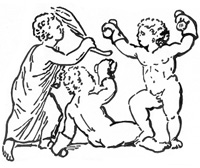
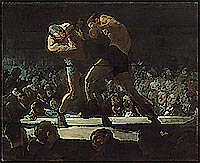

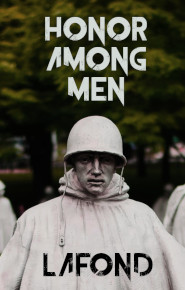
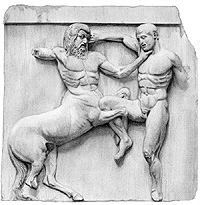
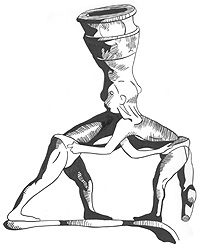


Very nice article mr La Fond.Because of such tactics and their study,old time boxing deemed complete form of self-defence.The clinch and it's variables (entering,breaking,hitting,redirecting,unbalancing)is often neglected by the majority of defence practitioners(at least in my country) even though,it's only logical that a serious attacker will try to grab you or control you.I believe also that clinch practice,is the key to make combatives and foul tactics work in a live event.
I agree with your observations Alex.
To study the likelihood of a clinch in an informal fight that does not involve a skilled grappler, you need only view a boxing match. Most boxing matches are one sided. Watch the fighter who is supposed to win. How many punches does he get off before there is a clinch?
Fortunately, since these guys are so sub-humanly tough you get to see the 3 to 10 second real fight window many times in one boxing match.
Check out the recent post 'Count Drachulich versus Van Chavez', and try to pull up a YouTube view of that fight if you want to see some sick clinch tactics.
Currently the most skilled clinch fighters in boxing, are, in order:
Bernard Hopkins
Floyd Money
Diego Chavez
That is not counting big heavyweights that are all good at it.
Clinching is something you could practice with your wife or larger children if you have no training partners.
Great article but didn't Ali clinch Frazier excessively (133 times) in their 1974 re-match at the Madison Square Garden. which thus precipitated Frazier's coach to refuse all 3 judges proposed by Manila promoter Don King, which in turn led to Carlos Padilla being named last-minute replacement Carlos Padilla?
Ali clinched Frazier even more in the Manila fight—and Eddie Futch was counting—I think it came to around 170, mostly a high overreach or over hook. For a guy of Ali's height who is facing an inside man just reaching over and checking the shoulder blade and cervical spine is very effective. For good counter clinching that would have shut Ali down look at the Klitschko brothers. I will be posting another of their fights soon to demonstrate counter clinching.
Thanks for checking in Simon.